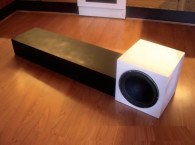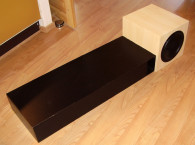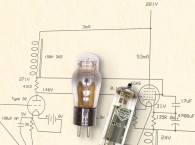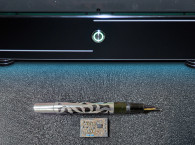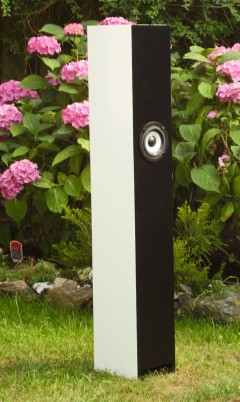
Inspired by debates on the Internet about quarter wave designs with Tang Band 3˝ full-range drivers, I decided to design my own quarter wave loudspeakers. They sure deserve a better construction than those found on the Internet.
In the last couple of years, I have worked with the useful simulation models from Martin J. King and designed and built a successful TL sub (“The HideAway TL Sub,” 7/06 aX). Working with Martin’s models is quite educational, and I feel confident about quarter wave (transmission line) design.
Please refer to my article “Martin J. King for Dummies” on www.t-linespeakers.org/.
The TABAQ Sound Pressure Level (SPL) is impressive for such a small driver, with a very smooth and broad frequency response. The dashed line in Fig. 1 is the Infinite Baffle (IB) response, and the solid line is the summed output from the driver and the opening.
The sound is open with no unwanted resonances, and the bass is relatively deep and clean. The first time you listen to this speaker, you will be impressed by the quality of the sound and performance of the bass, bearing in mind the size of the driver and the lack of financial problems building it. The problems with baffle step are corrected with a simple filter, which balances the SPL in the listening room.

Tang Band Drivers
You can use all the 3˝ drivers in this construction. My first test was with W3-926S, which I replaced with W3-315SC. The Tang Band drivers have a relatively high Fs and very high Qts, which means the rolloff is more gentle than a low Qts driver, and it is therefore possible to design a quarter wave with useful output well below Fs. However, high Qts drivers can be difficult to control.
The whole idea with a quarter wave — or transmission line — is to extend the bass by the contribution from the opening. At the cabinet resonance, the output adds to the driver output. However, there are some unwanted higher harmonics, which are out of phase with the driver, causing uneven frequency response. These problems can be solved by different design parameters, which I have successfully used with the TABAQ design.
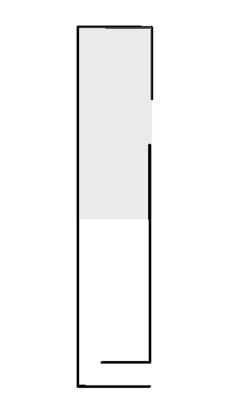
Design
The tuning frequency of the cabinet alone should be set lower than the driver Fs. Because the drivers all have a very high Qts, I started to see how low I could go, getting maximum bass performance out of the drivers without losing the overall frequency balance.
After hours of simulation with Martin’s MathCad models, I found the best compromise was 55Hz, which is low for drivers with an Fs of 100 or 110Hz. But it works!
The tuning frequency is set by the length of the pipe and the geometry. A tapered pipe is shorter than a straight pipe for the same tuning frequency. TABAQ uses the mass loading principle, in which the last part of the pipe has a smaller area than the rest of the pipe. The air in this part of the pipe adds resistance to the driver (more mass-mass loading). Compared to a straight pipe, the length is shorter. The problems with unwanted higher harmonics are solved by driver placement, stuffing, and applied the geometry as in the mass loading. The driver is one-third down the pipe, a common and well-known trick to attenuate the upper harmonics.
However, this is not enough, and damping of the cabinet is needed (as it is in every quarter wave). The damping is high (1 lb per cubic foot) and is placed in the upper part of the pipe. The last third of the pipe is not stuffed. The stuffing will attenuate the output from the opening, so I solved this by increasing the volume of the cabinet. Increasing the volume also increases the output from the opening, so this compensates for the high density stuffing.
The area of the pipe is four times the area of the driver (Sd). The TABAQ design is shown in Fig . 2. Don’t be confused. This is not a bass reflex enclosure; it is a quarterwave.


Listening Room
Until now, I have focused on design theory. Real life is different, and I must deal with the baffle step problem, which generally applies to all full-range designs.
You already know that a speaker placed in the middle of the room has a weaker bass than one placed against the wall. The same thing happens for the middle and high tones, which get extra help from the front of the cabinet. The result is a speaker that sounds bright with a focused middle tone. This “analytical” sound will be irritating after some time.
Therefore, you need a baffle step compensation circuit to attenuate the higher frequencies. Does it sound complicated?
It is not. Simply include a resistor and an inductor in parallel and place them in the + cable to the driver.
Martin King’s latest MathCad models now include calculations needed for baffle step compensation. For the TABAQ, you need a resistor value of 3.9Ω and an inductor value of 1.0mH. This is 4dB attenuation at 700Hz. If your cabinet is more than 1m from the wall, or you would prefer more attenuation of the higher frequencies, 6dB attenuation is accomplished by using 6.8Ω and 1.5mH instead. I have tested TABAQ with different kinds of music and placed the cabinet in the middle of the room, at the wall, and in the corner. The speaker is easy to place in the listening room, and the bass is well controlled.
I have even listened to organ music. Of course, it is not like being in church, but I was impressed by the lack of distortion.
Construction
You need 12mm MDF pieces in the following sizes:
12.4cm × 15.2cm, 2 pcs, top and bottom
79.2cm × 10cm, 1 pc, front
80.8cm × 10cm, 1 pc, back
9cm × 10cm, 1 pc, opening
80.8cm × 15.2cm, 2 pcs, side
Stuffing: 100 gram (0.23 lb) in the upper two-thirds of the cabinet
Filter: 1 resistor 3.9Ω and 1 inductor 1.0mH
Information about the Tang Band drivers can be found at www.tb-speaker.com/
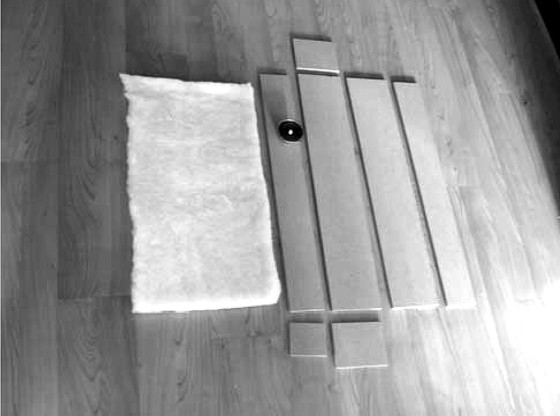

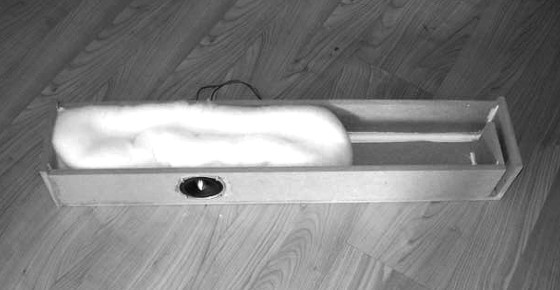
I would like to thank Martin J. King for his outstanding work and for educating us in the noble art of quarter wave design.
www.quarter-wave.com
I also want to thank the Danish Tang Band reseller Michael Sjorslev for his support.
As a final note: TABAQ is also doing very well with the 4˝ driver W4-1320SA.

is small. Half the area of the driver Sd.
There is no air turbulence (chuffing).
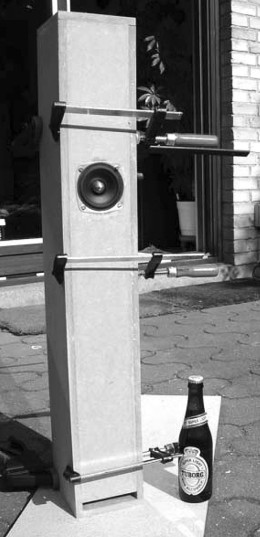
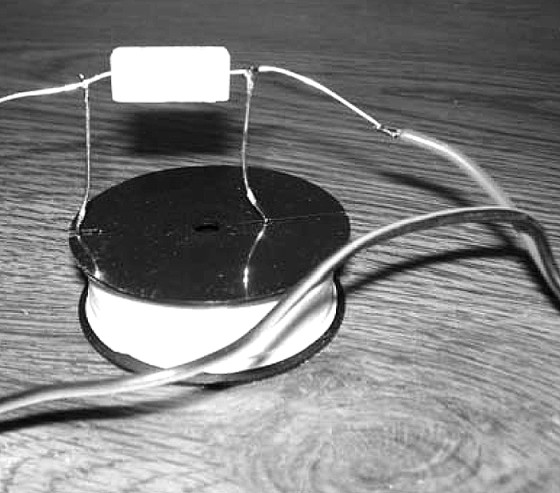
The sound is then balanced in your listening room. The resistor is in parallel with the inductor
and then placed in the + cable to the driver.


